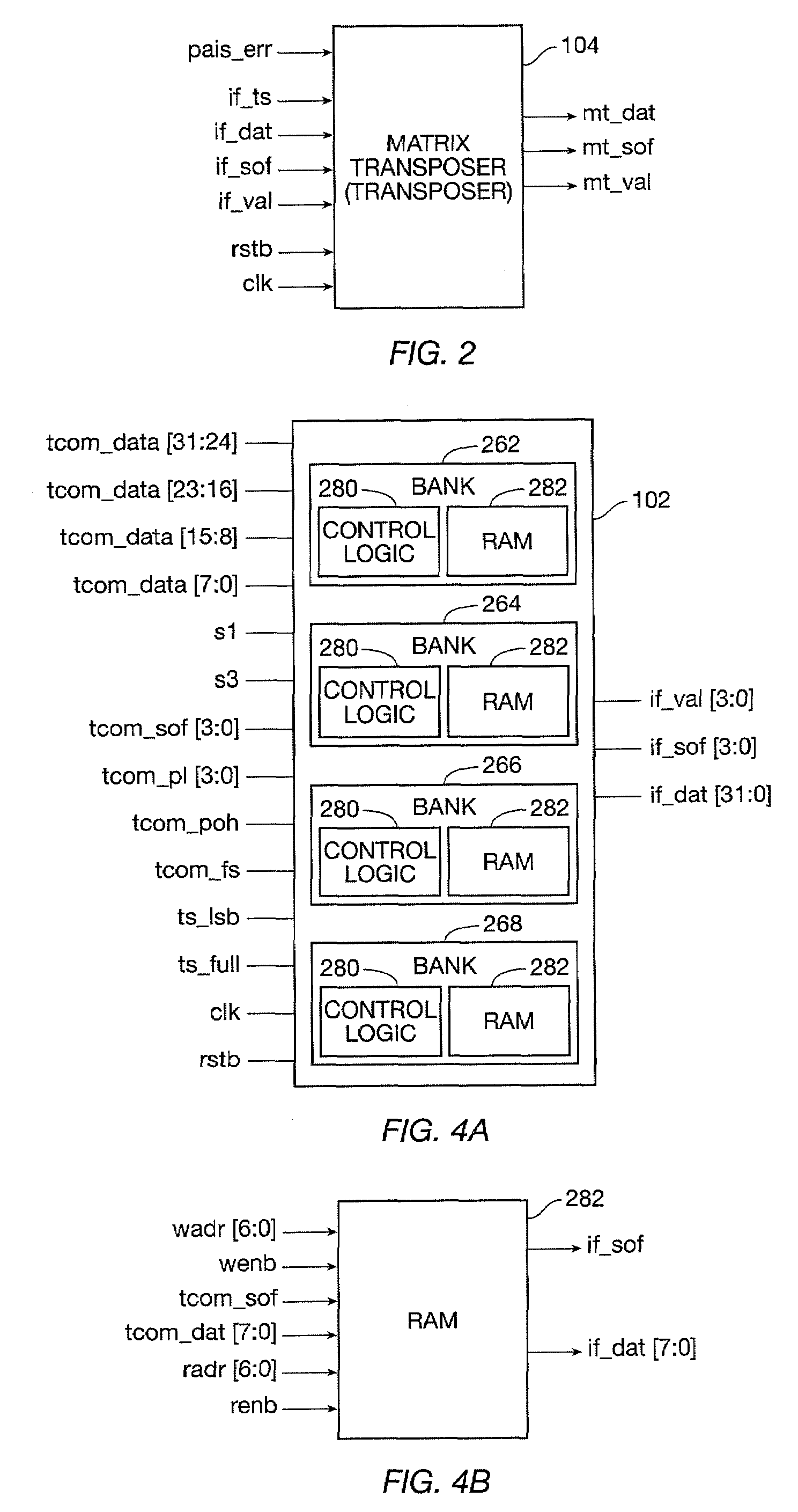Data format conversion for virtual concatenation processing
a data format and virtual concatenation technology, applied in the field of communication networks, can solve problems such as inefficient and wasteful bandwidth use, substantial similar propagation delays, and increased costs
- Summary
- Abstract
- Description
- Claims
- Application Information
AI Technical Summary
Benefits of technology
Problems solved by technology
Method used
Image
Examples
Embodiment Construction
[0027]An input buffer is adapted to receive incoming bytes of each SONET / SDH (hereinafter collectively refereed to as SONET) payload envelope (SPE), to extract and store the payload bytes of each SPE in one of its banks and to discard the overhead and fixed stuff bytes of each SPE that it receives. The payload bytes associated with the same time-slot are read and packed together and are supplied in groups aligned to the frame pulse associated with that time-slot.
[0028]The Input buffer includes a multitude of banks. Each bank includes a control logic and a RAM storage space. Each RAM storage space is organized as arrays of queues each having a number of rows. Each queue is further adapted to receive and store payload bytes associated with a different one of the time-slots. The input buffer may be embedded in a receive virtual concatenation processor (RVCP) adapted to convert time-interleaved bytes of SONET / SDH frames to per channel data defined by a channel mapping and an associated ...
PUM
 Login to View More
Login to View More Abstract
Description
Claims
Application Information
 Login to View More
Login to View More - R&D
- Intellectual Property
- Life Sciences
- Materials
- Tech Scout
- Unparalleled Data Quality
- Higher Quality Content
- 60% Fewer Hallucinations
Browse by: Latest US Patents, China's latest patents, Technical Efficacy Thesaurus, Application Domain, Technology Topic, Popular Technical Reports.
© 2025 PatSnap. All rights reserved.Legal|Privacy policy|Modern Slavery Act Transparency Statement|Sitemap|About US| Contact US: help@patsnap.com



